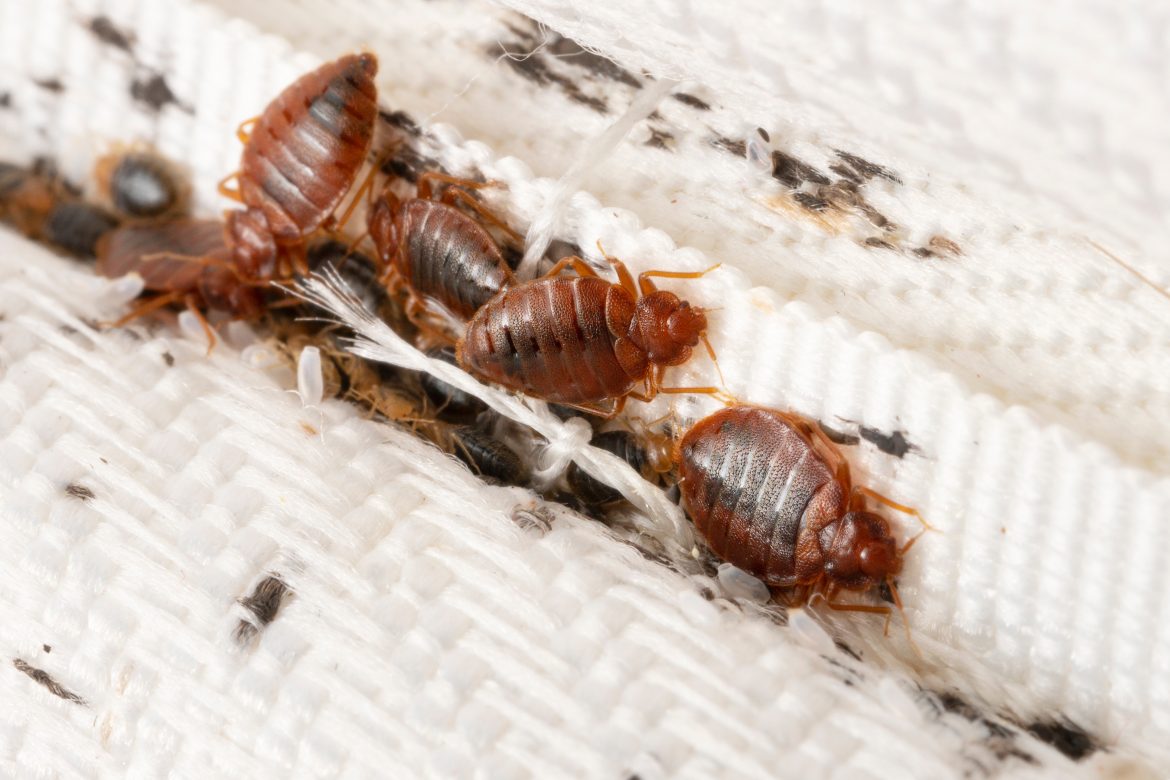Last week, London’s Mayor Sadiq Khan admitted that the rise in the number of bedbugs was a “real source of concern”.
Transport for London is disinfecting seats daily due to worries that the recent infestation in Paris could spread to London. Hotels too are taking extra precautions.
Should we be worried?
Bedbugs are not new in the UK.
“The thought of these bloodsuckers might be unpleasant, but they don’t carry or spread any human diseases,” says Rob Smith, Emeritus professor at the University of Huddersfield.
He says the insects have become more prevalent over the past years in the UK and around the world.
How to recognise a bed bug and its bite?
Bedbugs are tiny yellow/red/brown insects, about 5mm in size, flat and rounded, and cannot fly nor jump.
They reproduce quickly and can live for months, especially because of their hiding abilities.
Any sign of little bloodstains or brown spots could signify the presence of these pests, especially on fabrics.
It is easy to find them on mattresses, furniture, and public places such as theatres or public transport.
According to the NHS, the bites are usually on exposed parts of the body and produce red, itchy welts that could look more purple on a darker skin, sometimes they can also swell and be painful.
The bites are nothing to worry about and they disappear after a week. If they are painful, experts suggest keeping the area clean and putting a cool damp cloth on the bite.
How to get rid of bedbugs?
Professor Smith says they are tough to get rid of, but it is not impossible. There are simple measures you can take.
- Early detection: Finding the infestation at an early stage can really make a difference when it comes to treating it. It is important to look in crevices, cracks of bedframes, between couches, cushions, furniture joints, near mattress tags or under posters. You could also identify the eggs which are small and yellow.
- Contain the infestation: If you know you have bedbugs, it is easy to vacuum all the potential hiding spots and put the content in a plastic bag before throwing it away.
- Avoid spread: Not moving the furniture from one room to another can prevent spreading the infestation and moving your bed a few inches away from the wall limits bedbugs from climbing onto it.
- Separate dirty clothes: Keeping your dirty clothes separated and vacuuming crevices regularly helps prevent bedbugs from spreading.
Non-chemical treatments
These bugs can’t handle extreme temperatures. Wash infested items at high temperatures or use a steamer on the infested items. You can also place items in a sealed bag in the freezer at 0°C.
Chemical treatments
These are normally used for more severe infestations; effective options include Pyrroles, Neonicotinoids and Desiccants. Be aware that bedbugs have developed resistance to some common insecticides.
Bug bombs can be effective but do not get into crevices.
Killing bedbugs can take some days. It could also be helpful to monitor and capture the insects with bedbug traps.
Place a smaller plastic container inside a larger one and sprinkle them both with talcum powder which will make it difficult for the bedbugs to leave. Put masking tape on the outside of the larger container so that the bugs if bugs do climb out, they will stick to the tape making capturing them easier. Monitor the traps daily.
If your infestation is extreme or persistent, you may need to call in the experts.





